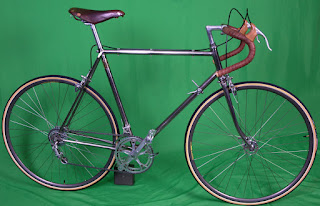Cities in the Western world have seen phenomenal increases in the number of cyclists on their streets during the past few years. One of the cities in which the increase has been most noted is London. According to one study, during the peak morning hours (7-10 pm), on some streets, as much as 64 percent of the traffic consists of bicycles.
In other words, at such times on those streets, there are almost two bicycles for every motorized vehicle or pedestrian!
The study also reveals--perhaps not surprisingly--a dramatic increase in the number of accidents, injuries and deaths among cyclists Most interestingly, it notes that most accidents and casualties occur during daylight hours.
But it also shows increase spending on cycling infrastructure (which include plans for a bicycle "Skyway")--which, with greater public awareness, could reduce, or at least slow the increase in, the numbers.
Perhaps the most thought-provoking statistic of all, though, is this: If just fourteen percent of all trips in Central London were on bicycles, emissions of nitrogen oxides--the most prominent vehicle pollutant--would fall by nearly a third.
That is to say, when people ride bikes rather than drive in the central city, it has double the effect in reducing at least one major type of pollution: no small matter in a city noted for its congestion and fog.
In other words, at such times on those streets, there are almost two bicycles for every motorized vehicle or pedestrian!
The study also reveals--perhaps not surprisingly--a dramatic increase in the number of accidents, injuries and deaths among cyclists Most interestingly, it notes that most accidents and casualties occur during daylight hours.
But it also shows increase spending on cycling infrastructure (which include plans for a bicycle "Skyway")--which, with greater public awareness, could reduce, or at least slow the increase in, the numbers.
Perhaps the most thought-provoking statistic of all, though, is this: If just fourteen percent of all trips in Central London were on bicycles, emissions of nitrogen oxides--the most prominent vehicle pollutant--would fall by nearly a third.
That is to say, when people ride bikes rather than drive in the central city, it has double the effect in reducing at least one major type of pollution: no small matter in a city noted for its congestion and fog.
| From Fiona Outdoors |
